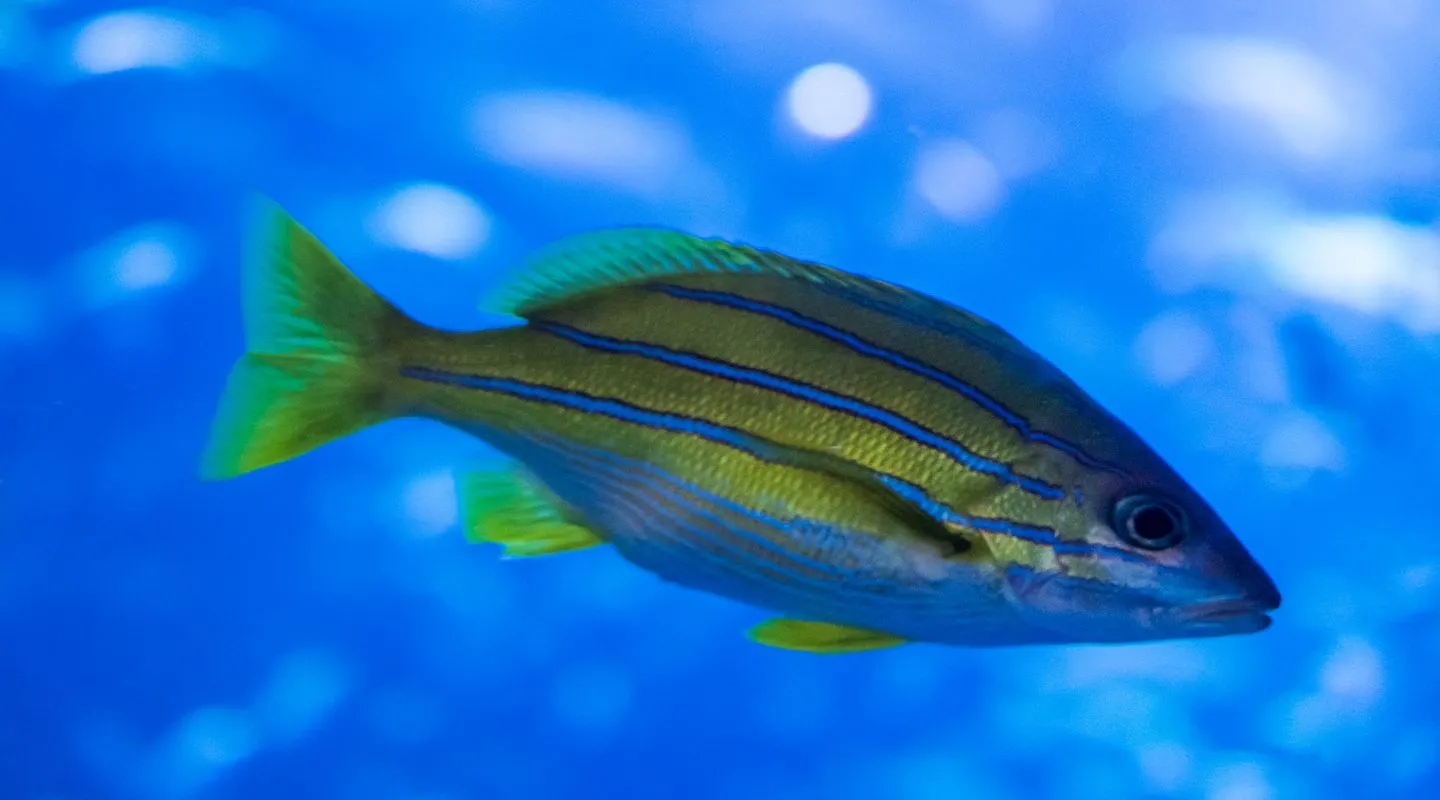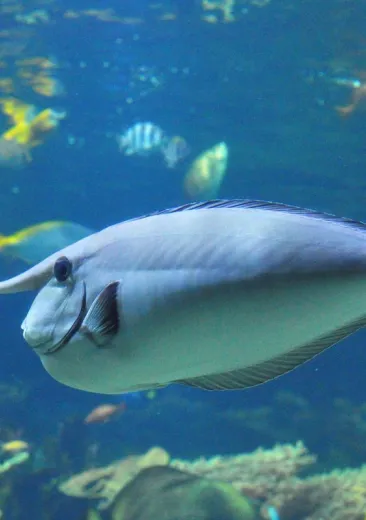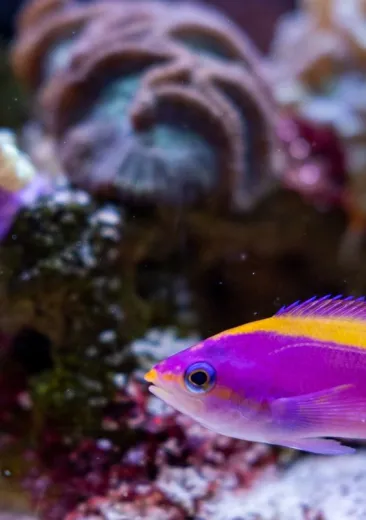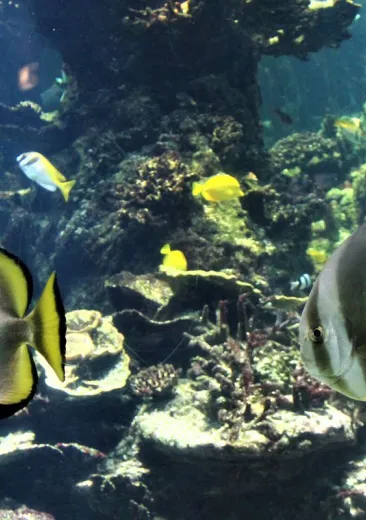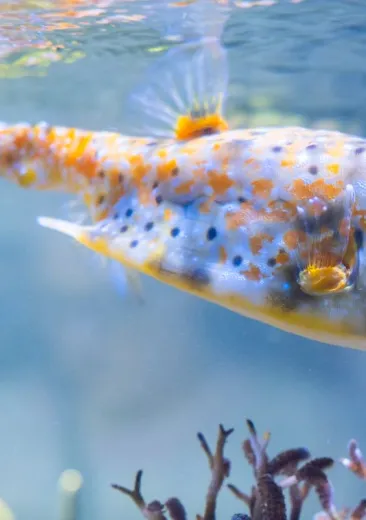Where is the animal to be found?
The common bluestripe snapper is a fish that can be found around coral reefs in the Indo-Pacific area.
It lives in groups around coral reefs. The bluestripe snapper lives at a depth of at least 60 m but has been reported at a depth of 265 m.
It can be found living in large groups around coral reefs, in shallow lagoons or on the outer slopes of reefs. Juveniles reside in seagrass beds around the reefs.
How can it be recognised?
The size of the snapper varies between 20 and 35 cm. It can be recognised by its yellow body striped with 4 horizontal blue lines. The first 3 lines run all the way from the eye to the dorsal fin; the last line runs from the snout to the caudal fin.
What is distinctive about it?
This species seems to be attached to its habitat: in French Polynesia, large groups of snappers have formed from a few individuals.
